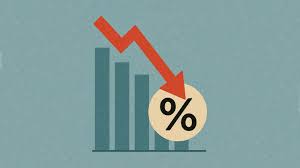
Signs of farm ‘revolution’ in India as coronavirus prompts change
Administrator_India | July 23, 2020 | 0 | BusinessBy Administrator_India
For more than two decades, Indian farmer Ravindra Kajal cultivated rice the way his forefathers had – every June he flooded his fields with water before hiring an army of farmhands to plant paddy seedlings.
But a scarcity of workers this year because of the coronavirus forced Kajal to change. He irrigated the field just enough to moisten the soil and leased a drilling machine to directly sow seeds on his 9-acre (3.6-hectare) plot.
“Since I was more than comfortable with the tried-and-tested way of growing rice, I opted for the new method with some trepidation,” said Kajal, 46, looking over his field, green with rice saplings, in the Raipur Jattan village in Haryana state.
“But I’ve already saved around 7,500 rupees ($100) per acre because I hardly spent on water and workers this year,” he said.
India is the world’s biggest exporter of rice and the world’s second-biggest producer after China. Across the country’s grain bowl states of Haryana and neighbouring Punjab, thousands of farmers like Kajal have been forced by the coronavirus to mechanise planting.
They are still wary of the technology and overturning the time-honoured use of manual labour.
But Kahan Singh Pannu, Punjab’s agriculture secretary, is convinced a historic change is underway that could dramatically increase India’s rice output, which in turn could impact world markets.
Government officials say the so-called direct seeding of rice (DSR) method could increase yields by about one-third and slash costs on workers and water.
The DSR machines allow farmers to grow more than 30 saplings per square metre against the usual 15 to 18 seedlings, said Naresh Gulati, a state government farm official in Punjab.
Punjab is the home of the 1960s Green Revolution that led to a spike in crop yields. This year, farmers there have used seed drilling machines to sow rice on more than half a million hectares, a big increase compared with less than 50,000 hectares in 2019, growers and government officials said.

